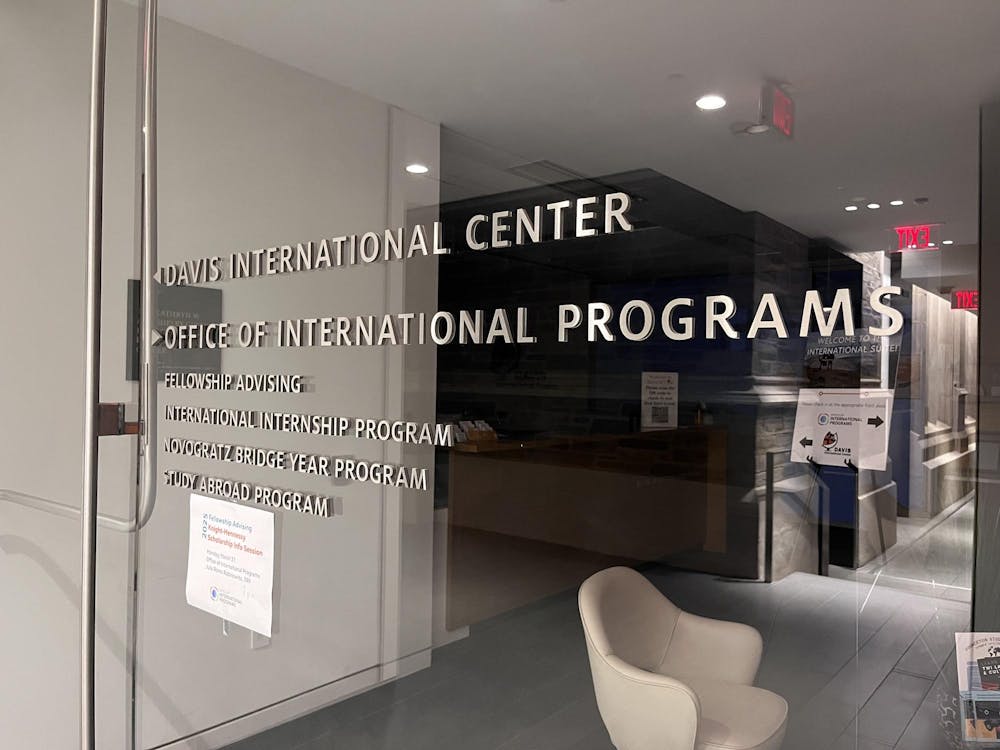Carlos Ghosn, chairman and chief executive of Renault-Nissan Alliance, spoke on the continued sustainability of the car manufacturing industry in the Friend Center on Monday. The event was hosted by the Andlinger Center for Energy and the Environment and sponsored by the G. S. Beckwith Gilbert ’63 Lecture Fund.
Ghosn emphasized that the alliance between the two organizations is not a merger, but rather a decision to work together. In this sense, the two companies keep their own identities while combining resources towards a common goal, he explained, and therefore do a better job than if each company were to work alone.
In addition to the two major members, Nissan and Renault, the alliance represents an association of other companies that work together, representing 7.2 million cars, $150 million in revenue and 350,000 people directly employed by the corporations in 2010. These numbers position the alliance in the “number 3 or 4 position in the world” of major corporations, Ghosn said.
Ghosn described the two parts of the alliance’s strategy: mobility for all and suitable mobility. Mobility for all represents the mission of providing transportation for every person who wants it, regardless of where he or she lives. This includes all types of transportation, said Ghosn, noting that that Renault-Nissan is “not a niche producer,” and oversees a wide range of vehicles.
Sustainable mobility relates to the question of reconciling transportation needs with environmental concerns, Ghosn said.
According to Ghosn, Renault-Nissan is therefore looking to manufacture zero-emissions vehicles that would be “compatible with respect to the environment.”
Ghosn noted that there are 750 million cars driven daily in the world, a figure that, by even the most conservative estimates, will double in the next 15 years. These numbers make it imperative for car manufacturers to develop zero-emissions vehicles and reduce transportational dependence on oil fuel, he said.
Ghosn credited diversity with setting the alliance apart from companies such as Volkswagen, Toyota or General Motors, though each are the same size as or bigger than Renault-Nissan.

Other companies such as Volkswagen, which are often linked to one particular country, lack the multicultural, international associations that have allowed Renault-Nissan to succeed, Ghosn said. This diversity brings together the best of each country, allowing the parts to work together while remaining autonomous, he explained.
“There is a lot of research taking place in this arena,” he added. “We are running our operation based on ... diversity.”
During the question-and-answer session that followed the lecture, one audience member asked how the international alliance coordinates working with different languages, time zones and cultures.
Ghosn noted that it was “much easier” working only with people of similar backgrounds, but that “the problem is, you [are] all going to have the same perspective on the same problem.”

Working with diversity takes “much more time,” but “the prize is that you’re going to get a much better solution,” he added.
Ghosn also spoke about the necessity of being a “global maker” in today’s market. “I don’t think there is a place today ... for niche players,” he said of the automobile industry. He noted that several manufacturers who have recently closed were niche players, and that current successful niche manufacturers, such as BMW and Mercedes, are trying to globalize.
When asked about the success of synergy, Ghosn said that the idea has helped the alliance in both manufacturing and global expansion.
Both Renault and Nissan, by sharing technologies related to platforms and engines, have saved billions of dollars in investments by using the same technology with different designs, he said, aiding the two companies in developing more quickly. The companies also share plants when expanding to new countries, he said, reducing additional investment costs.
Ghosn is also the CEO of Nissan, which is based in Japan, and Renault, which is based in France. He was the first person in the world to concurrently lead two Fortune Global 500 companies. He was named one of the seven most powerful South Americans by Forbes.com last year and was voted Man of the Year by Fortune magazine’s Asian edition in 2003.







